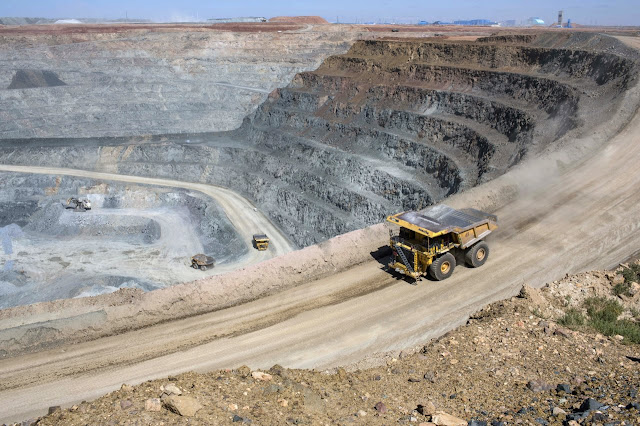MINERS RISK FALLING DOWN SAME OLD HOLE / THE WALL STREET JOURNAL
Miners Risk Falling Down Same Old Hole
Rebounding investment in copper and iron mines could spell trouble next year
By Nathaniel Taplin
The Oyu Tolgoi copper-gold mine in Khanbogd, the South Gobi desert, Mongolia. Photo: Taylor Weidman/Bloomberg News
Commodity powerhouse Australia has always been lucky, but the last few months have been particularly kind. Copper, coal and aluminum prices are all at or near multiyear highs—with iron ore not far behind—and big miners’ profits and share prices are riding high too.
That is a welcome change after years of disappointment for mining investors. The cloud looming over recent stellar results from the likes of Rio Tinto, Anglo American NGLOY 1.97%▲ and BHP is that they are falling into a familiar trap: namely, using high commodity prices as an excuse to spend more just at the wrong time in the cycle. Aggregate capital expenditures from the Big Five miners—which also include Glencore GLNCY 1.16%▲ and Brazil’s Vale—are set to rise sharply for the first time since the commodity crash.
That renewed investment push comes as the biggest source of demand for industrial metals, the Chinese real-estate sector, is showing signs of weakness following big growth over the last 18 months. Sure, mining investment is rising from very low levels following years of belt-tightening, which means metals markets remain in balance for now. But if miners keep ramping up at current levels next year, there is a real danger of another tumble in prices in the next couple of years.
There is some logic to the price gains for metals so far this year, with demand strong and investment in new supply low. Chinese property investment was galloping along at growth rates of over 10% by late 2016, levels not seen since before the commodity crash. Total capital expenditure by the Big Five global miners meanwhile languished at around $8 billion in the first half of 2017—about one quarter of the boom-time levels of 2011 and 2012.
FOLLOW THE LEADER
Change from a year earlier(rmb)
The bad news is that miners’ guidance implies a roughly 30% rise in capital expenditure in the second half of 2017—the sharpest on-year rise since 2012—just as Chinese real estate is starting to look wobbly. Property investment in China grew at its slowest pace in over a year in July.
Hot weather may have played a role, but if August data show investment weakening again, demand for iron ore and copper will inevitably start to follow. China trade data released Friday painted a mixed picture: Copper ore and coal imports dropped on the year, while iron-ore imports grew, albeit weakly.
Industrial metals have not yet lost their shine, but the mining sector has a history of misreading China to catastrophic effect. If capital expenditures keep rising at the same rate next year, it might be time for investors to sell those shares while they’re still glittering.


0 comments:
Publicar un comentario